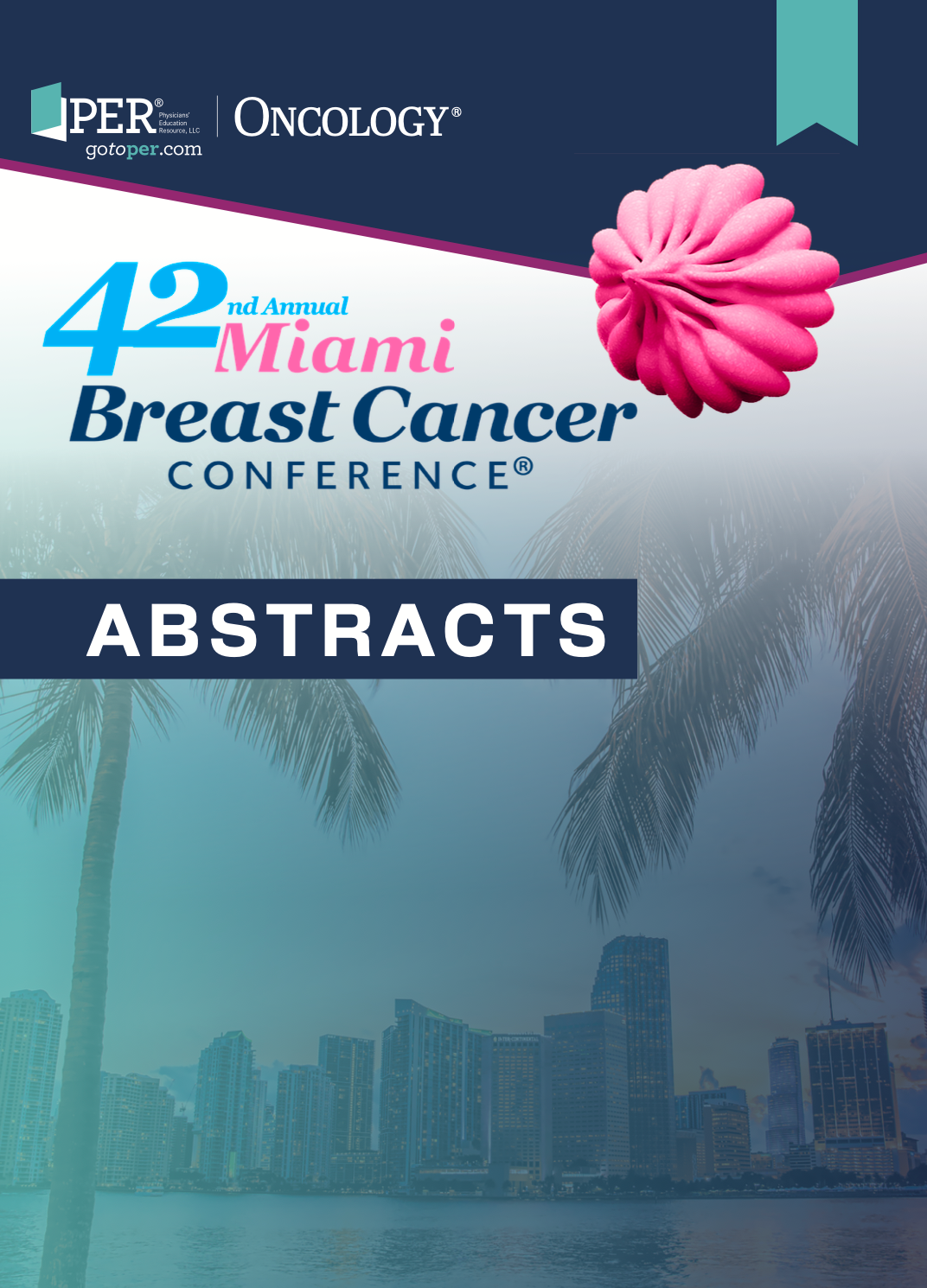100 Non-Pharmacological Interventions for Managing Abemaciclib-Associated Adverse Events in Patients With Early/Advanced HR+/HER2– Breast Cancer: A US-Based Health Care Provider Survey
100 Non-Pharmacological Interventions for Managing Abemaciclib-Associated Adverse Events in Patients With Early/Advanced HR+/HER2– Breast Cancer: A US-Based Health Care Provider Survey

Background
Diarrhea, nausea, fatigue, and abdominal pain are the most common patient-felt abemaciclib-associated adverse effects (AEs). This study describes the use and perceived effectiveness of nonpharmacological interventions (NPI) by health care providers (HCPs) in abemaciclib-associated AEs in early or advanced hormone receptor–positive/HER2-negative (HR+/HER2–) breast cancer.
Materials and Methods
A cross-sectional survey was conducted between July and October 2023 among US-based health care providers (HCPs; advanced practice providers [APP], oncologists, and pharmacists), with 12 months or more of experience in breast cancer care and supporting abemaciclib treatment. Eligible HCPs completed a 1-time online survey, designed based on literature and insights from exploratory qualitative work, which included interviews of 9 HCPs (3 from each specialty of HCPs). HCPs selected and ranked (based on perceived effectiveness) recommendations for NPI. Data were collected via online structured questionnaires with closed-ended questions and analyzed descriptively.
Results
Overall, 46% (282/608 eligible) HCPs (APP: 91, oncologists:91, pharmacists:100) completed the survey; 85% HCPs had 5 years or more of experience treating breast cancer; less than 90% recommended NPI for managing abemaciclib-associated AEs. Diarrhea: “Assessment of fluid-intake/hydration status” was the most recommended NPI (65.6% HCPs) and perceived effective (49.6% HCPs), followed by “emphasis on the importance of hydration” (63.5%; 47.9%). Nausea: “Taking medication with food” topped recommendations (63.5%) and was perceived as most effective (55.3%). Fatigue: “moderate exercise (walking/biking/swimming)” was most recommended (57.8%) and effective (51.4%); ‘creating rest-time in the day’ (57.4%; 49.3%) closely following. Abdominal pain: “Keeping side effect (SE) diary to track SEs frequency and severity for follow-ups” (44.3%) was most recommended and effective (32.6%), alongside “taking medication with food” (40.4%; 33.3%) and “Recommend patient monitor diet to assess SE’s cause” (40.8%; 32.6%). Compared with oncologists, a greater portion of APP and pharmacists considered NPI to be effective.
Conclusion
NPIs are commonly utilized by APP, oncologists, and pharmacists for management of abemaciclib-associated diarrhea, nausea, fatigue, and abdominal pain. HCPs recommend NPIs they perceive as effective and that are unique for each patient-felt symptom. These data describe common approaches that can be used in addition to pharmacological interventions to manage AEs effectively and to optimize therapy.
